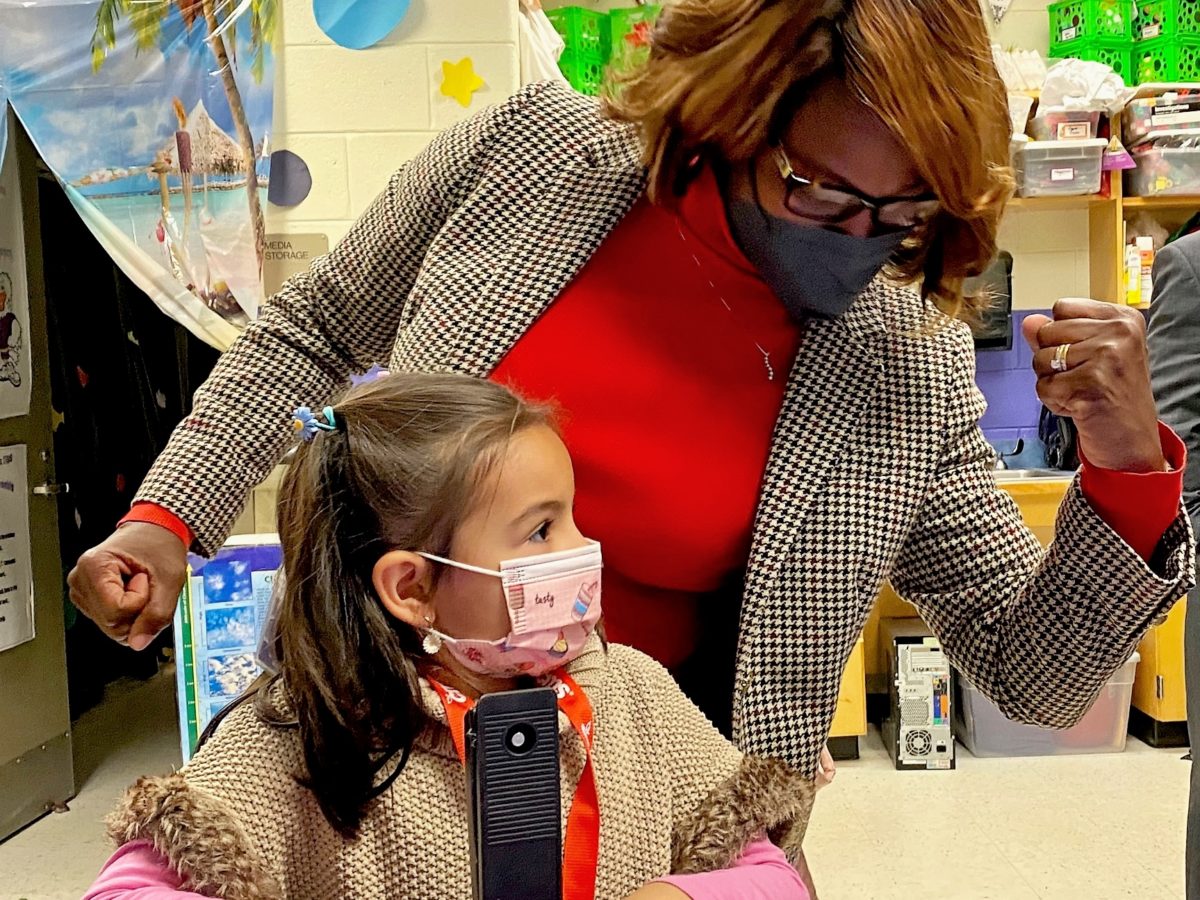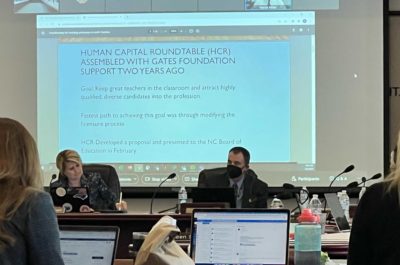
|
|
State Superintendent of Public Instruction Catherine Truitt declared 2022 “the year of the workforce” at the most recent State Board of Education meeting.
According to data analyzed by EducationNC, in 49 of the state’s 100 counties, an entity providing “educational services” is the top employer, and in 46 of those counties, it is the public school system filling that role. There are zero counties in North Carolina where “educational services” don’t crack the top 25 employers.
In the three counties where the public school system isn’t the top educational employer, a public institute of higher learning fills the role: Western Carolina University in Jackson County, UNC-Chapel Hill in Orange County, and Appalachian State University in Watauga County.
The number of school districts serving as their county’s biggest employer has dropped since 2015. Back then, 66 public school districts were the top employer, compared with 46 now.
That can, however, be attributed in many counties to the fact that health care, or some other industry, is growing faster than schools.
While two school districts actually became their counties’ largest employer in 2021 versus 2015, 19 dropped out of the top spot.
In six of those, hospitals overtook the school districts as the largest employer. In some of the others, manufacturing, retail, or even county government now employs more workers.
Additionally, school districts are the number two employer in 26 counties, and they are the number three employer in another 15 counties. That puts districts in the top three employers in 87 out of 100 districts in North Carolina.
There are 115 school districts in the state.
All school districts that serve their entire county are in the top five employers in their county.
All but four districts in the state are in the top 25 employers in their county. The four that aren't are smaller city districts: Asheville, Elkin, Hickory, and Newton-Conover.
There are 12 counties in the state that have more than one school district, meaning that the economic impact is spread out amongst multiple entities. One notable example is Halifax County, which has three school districts: Halifax County Schools, Roanoke Rapids Graded School District, and Weldon City Schools. In Halifax, those districts rank fourth, seventh, and thirteenth, respectively, when it comes to employment in the county.
Julie Pittman, special advisor on teacher engagement to Truitt, said that the data on public schools as top employers highlights the bond between education and community.
"I think from my perspective being a former teacher in a rural district, the strength of the public school system really mirrors the strength of the community, and we see that in districts across the state," she said.
These bonds are evident in place like Haywood County, where she says people who aren't even affiliated with the school system come out on Friday night to watch a school's football game.
"It is the time-honored ritual of the school being the center of the community and bringing different parts of the community together," Pittman said.
In her own county of Rutherford, she said hundreds of people come out to volunteer as mentors, substitute teachers, and tutors.
"They want to help the students know how important they are to the entire ecosystem of that community," she said.
While public school districts are often a major — if not the top — employer in a district, they are not the only educational entity to have such an impact.
Multiple charter schools make the list of top employers for their county. Lincoln Charter School in Lincoln County, Henderson Collegiate in Vance County, and Charter Day School in Brunswick County are all the fourteenth largest employers in their counties. Arapahoe Charter School in Pamlico County is that county's tenth largest employer. And in two counties, charter schools are the fifth largest employer: Perquimans County has the Northeast Academy for Aerospace and Advanced Technologies and Northampton County has KIPP ENC.
Of the state's 58 community colleges, 54 are in the top 25 in their counties.
However, only two make the top five: Isothermal Community College in Rutherford County and Richmond Community College in Richmond County. The four that didn't make the list are: Central Piedmont Community College, Durham Technical Community College, Guilford Technical Community College, and Mitchell Community College.
All public universities in the University of North Carolina System except the UNC School of the Arts hold a high spot in their counties, with UNC-Chapel Hill, Western Carolina University, and Appalachian State University holding the number one spot in their respective counties (as mentioned above). Other big employers are East Carolina University and North Carolina State University, which are second in their counties; UNC-Wilmington, which is third in its county; and UNC-Greensboro and Elizabeth City State University, which are the fourth largest employers in their counties.
There are 10 historically black colleges and universities in North Carolina. The five public ones in the UNC System all made the list:
- Winston Salem State University (25).
- North Carolina Central University (17).
- Fayetteville State University (14).
- North Carolina Agricultural and Technical State University (11).
- Elizabeth City State University (4).
Private colleges and universities also often make the list, including Chowan University (9), Gardner-Webb University (8), Brevard College (6), Lees-McCrae College (5), Campbell University (3), and Mars Hill (2).
Altogether, 222 employers providing educational services are in the top 25 county employers.
The North Carolina Chamber gave the following statement about the importance of education organizations to the state's economy:
"Every business in North Carolina is vital to our state’s economic success because each organization provides valuable jobs to North Carolinians. School districts and universities advance North Carolina’s economy by preparing our students for the modern workforce," the statement read. "An educated and skilled talent pipeline is not only essential to retaining businesses that have chosen North Carolina as their home, but also recruiting new businesses that will strengthen our economic competitiveness and improve quality of life for North Carolinians."
Pittman said that rural flight is a real thing in North Carolina. But, she said that educators can do something about it by helping connect student passions with workforce opportunities in their own communities.
“ I would hope that some of those passions would be the opportunity to become a teacher," she said. "To affect all future jobs.”
The data used to compile this information come from quarter two of the 2021 data from the quarterly census of employment and wages, which you can find here.
Join EdNC's Mebane Rash in a conversation with Truitt and Chamber President and CEO Gary Salamido on Jan. 26 at 11 a.m. to discuss how K-12 education fuels North Carolina's competitive success.
Behind the Story
Katie Dukes and Mebane Rash analyzed the data for this article. Katie Dukes created the data visualizations. Anna Pogarcic created the maps. Alex Granados did the reporting.








